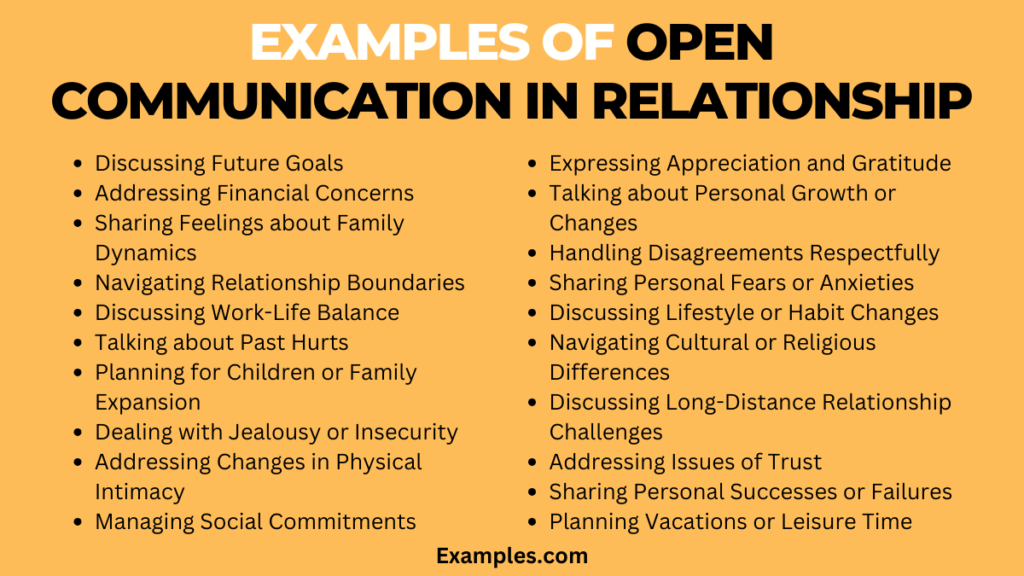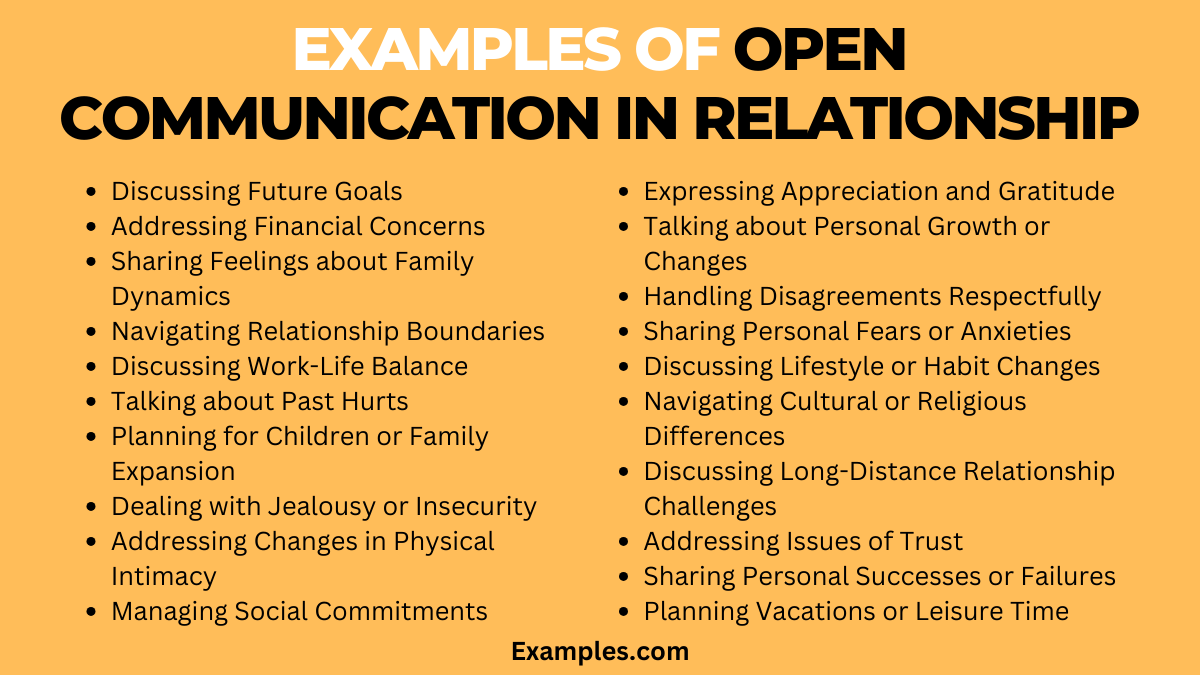
What to Communicate in a Relationship: Building Stronger Bonds
Effective communication is the cornerstone of any successful relationship. It’s more than just exchanging words; it’s about understanding, empathy, and creating a safe space for vulnerability. Knowing what to communicate in a relationship, and how to do it effectively, can significantly strengthen the bond between partners, fostering trust and intimacy. This article delves into the essential aspects of communication that contribute to a healthy and fulfilling relationship.
The Importance of Open Communication
Open communication is the foundation upon which strong relationships are built. It involves being honest, transparent, and willing to share your thoughts, feelings, and experiences with your partner. Without open communication, misunderstandings can arise, resentments can fester, and the relationship can slowly erode. But what to communicate in a relationship goes beyond just stating facts; it’s about creating an environment where both partners feel comfortable expressing themselves without fear of judgment or criticism. This is vital for long-term relationship health.
Building Trust Through Transparency
Transparency is a key component of open communication. It means being upfront about your actions, intentions, and past experiences. When you’re transparent with your partner, you build trust, which is essential for a strong and lasting relationship. This doesn’t mean you have to share every single detail of your life, but it does mean being honest about the things that matter. Consider what to communicate in a relationship in terms of past experiences and how they affect your current behavior.
Creating a Safe Space for Vulnerability
Vulnerability is the ability to be open and honest about your feelings, even when it’s uncomfortable. Creating a safe space for vulnerability means that both partners feel comfortable sharing their fears, insecurities, and dreams without fear of judgment or rejection. This level of intimacy is crucial for building a deep and meaningful connection. It’s important to know what to communicate in a relationship to cultivate this safety.
Essential Topics to Discuss
Now that we’ve established the importance of open communication, let’s explore some of the essential topics that you should discuss with your partner.
Feelings and Emotions
Sharing your feelings and emotions is crucial for building intimacy and understanding. It’s important to be able to express your joy, sadness, anger, and fear in a healthy and constructive way. When you share your feelings, you allow your partner to connect with you on a deeper level and understand your perspective. This includes knowing what to communicate in a relationship when negative emotions arise.
Needs and Expectations
Everyone has different needs and expectations in a relationship. It’s important to communicate your needs and expectations clearly and respectfully. This includes your emotional needs, physical needs, and practical needs. When you communicate your needs, you give your partner the opportunity to meet them and support you. Failure to understand what to communicate in a relationship regarding expectations can lead to conflict. [See also: Setting Healthy Boundaries in Relationships]
Dreams and Goals
Sharing your dreams and goals with your partner can help you feel more connected and supported. It’s important to know that your partner is invested in your success and that they are willing to support you in achieving your goals. This includes discussing your career aspirations, personal goals, and financial goals. Knowing what to communicate in a relationship in this area can lead to mutual growth.
Fears and Insecurities
Everyone has fears and insecurities. Sharing these vulnerabilities with your partner can help you feel more understood and accepted. It’s important to be able to trust your partner with your deepest fears and insecurities, knowing that they will support you and offer comfort. Discussing what to communicate in a relationship in terms of these vulnerabilities can create a stronger bond.
Past Experiences
Sharing your past experiences can help your partner understand who you are and how you became the person you are today. It’s important to be open and honest about your past relationships, your childhood experiences, and any traumas you may have experienced. While you don’t have to reveal everything at once, gradually sharing these details can build trust and intimacy. Consider what to communicate in a relationship based on the level of trust you’ve developed.
How to Communicate Effectively
Knowing what to communicate in a relationship is only half the battle. You also need to know how to communicate effectively. Here are some tips for improving your communication skills:
Active Listening
Active listening involves paying attention to what your partner is saying, both verbally and nonverbally. It means putting aside your own thoughts and feelings and focusing on understanding your partner’s perspective. Active listening also involves asking clarifying questions and summarizing what you’ve heard to ensure that you understand correctly. [See also: The Art of Active Listening in Relationships]
Using “I” Statements
Using “I” statements can help you express your feelings and needs without blaming or accusing your partner. For example, instead of saying “You always make me feel like I’m not good enough,” you could say “I feel like I’m not good enough when you criticize my work.” “I” statements help you take responsibility for your own feelings and avoid putting your partner on the defensive. When deciding what to communicate in a relationship, frame it in terms of your own experience.
Being Empathetic
Empathy is the ability to understand and share the feelings of another person. When you’re empathetic, you can put yourself in your partner’s shoes and see things from their perspective. This can help you communicate more effectively and resolve conflicts more easily. It’s crucial to know what to communicate in a relationship with empathy and understanding.
Avoiding Criticism and Blame
Criticism and blame can be very damaging to a relationship. When you criticize or blame your partner, you’re essentially telling them that they’re not good enough. This can lead to feelings of resentment and defensiveness. Instead of criticizing or blaming, try to focus on expressing your needs and feelings in a constructive way. Understanding what to communicate in a relationship involves avoiding destructive patterns.
Taking Breaks When Necessary
Sometimes, conversations can become heated and unproductive. In these situations, it’s important to take a break and cool down before continuing the conversation. This can help you avoid saying things you’ll regret and allow you to approach the conversation with a clearer head. Knowing what to communicate in a relationship also means knowing when to pause the conversation.
Common Communication Pitfalls
Even with the best intentions, couples can fall into common communication pitfalls. Recognizing these pitfalls can help you avoid them and improve your communication skills.
Passive-Aggressive Communication
Passive-aggressive communication involves expressing your feelings indirectly, often through sarcasm, negativity, or procrastination. This type of communication can be very frustrating for your partner and can damage the relationship. Being direct and honest is a much healthier approach. Avoid hinting and be clear about what to communicate in a relationship.
Stonewalling
Stonewalling involves withdrawing from a conversation and refusing to engage. This can be a form of emotional abuse and can leave your partner feeling ignored and rejected. It’s important to stay engaged in the conversation, even when it’s difficult. Instead of shutting down, try to express your feelings and needs in a calm and respectful way. It’s vital to know what to communicate in a relationship rather than shutting down completely.
Defensiveness
Defensiveness involves protecting yourself from perceived attacks or criticism. When you’re defensive, you’re less likely to listen to your partner’s perspective and more likely to escalate the conflict. Try to approach conversations with an open mind and a willingness to understand your partner’s point of view. Consider what to communicate in a relationship without immediately becoming defensive.
Contempt
Contempt is the feeling that someone is worthless or deserving of scorn. It’s one of the most destructive emotions in a relationship and can lead to feelings of resentment and anger. If you’re feeling contempt towards your partner, it’s important to address the underlying issues and seek professional help if necessary. Avoid showing disrespect when deciding what to communicate in a relationship.
Seeking Professional Help
If you’re struggling with communication in your relationship, don’t hesitate to seek professional help. A therapist or counselor can provide you with tools and strategies for improving your communication skills and resolving conflicts in a healthy way. Therapy can be a valuable resource for couples who are committed to building a stronger and more fulfilling relationship. Understanding what to communicate in a relationship can be improved with professional guidance.
Conclusion
Effective communication is the key to a strong and lasting relationship. By being open, honest, and empathetic, you can create a safe space for vulnerability and build a deep and meaningful connection with your partner. Remember that what to communicate in a relationship, and how you communicate it, significantly impacts the health and longevity of your bond. By focusing on active listening, using “I” statements, and avoiding common communication pitfalls, you can strengthen your relationship and create a more fulfilling partnership.

